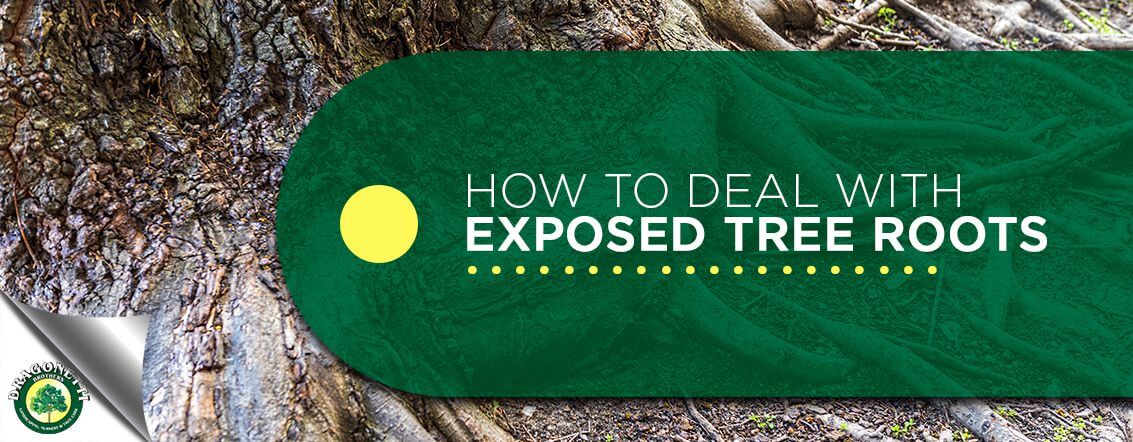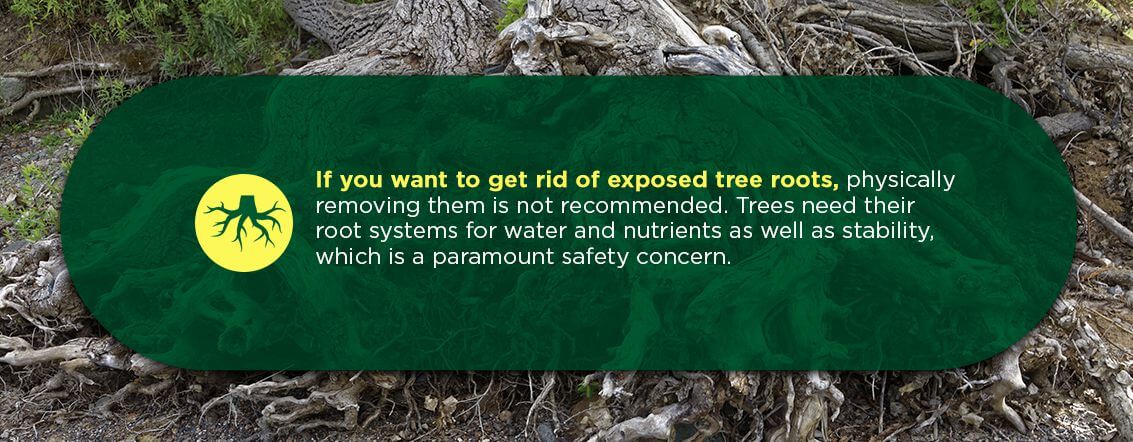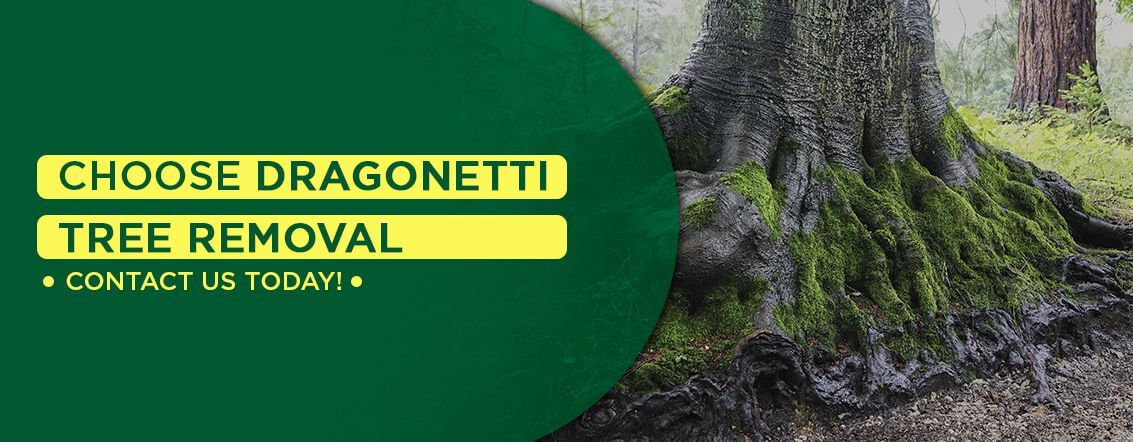
Landscape trees are impressive features of any yard, providing years of enjoyment for homeowners. Unfortunately, some trees have naturally shallow root systems, meaning they become exposed above the soil’s surface over time. Visible roots can be problematic, and many homeowners wonder how they can get their root exposure under control.
If you’re wondering how to get rid of exposed tree roots and keep visible roots at bay, then this guide will cover some of the proven ways to fix exposed tree roots without killing your tree.
HOW TO FIX EXPOSED TREE ROOTS
A sign of a healthy aging tree is having a wide base diameter and larger roots flare to support its growth as it matures. Trees need their network of roots to obtain water and nutrients and promote healthy growth. A bowl around a tree is an indicator that your landscape tree is strong, thanks to its supportive root system.
However, sometimes the base of a tree starts to appear unsightly, especially when shallow roots begin to emerge from the soil. A common concern is how to cut, remove or manage exposed tree roots without killing the tree. Thankfully, there are some proven techniques you can use in your yard to get rid of tree roots while still preserving your tree’s health.
When dealing with a living organism like a tree, it’s vital to know both the correct and incorrect ways to manage tree roots without killing your tree.
HOW TO COVER EXPOSED TREE ROOTS
Covering exposed tree roots is the best strategy for tree root management. By covering your visible tree roots with a material like mulch or compost, you protect the roots while improving the appearance of your landscape. The idea is to create a safe perimeter around the base of the tree where the lawn mover doesn’t need to trim.
The first step to covering exposed tree roots is to gently remove the turf from the area under the tree where the exposure is occurring. By edging around tree roots, you create a clear line between the covering and the rest of the lawn.
After you’ve removed and edged the turf, apply a three to four-inch layer of mulch or compost and evenly cover the bare area. Bark much is a light substrate that encourages air and water flow. It also protects the ground from soil erosion and insulates the exposed roots. Be careful not to apply the mulch directly against the trunk, leaving a small distance to prevent rot.
When covering your exposed tree roots, don’t cover the area by planting perennials, as these bedding plants will compete with the tree for nutrients and water. Some people also build retaining walls or other hardscapes around their tree base, which is also not recommended, as tree roots will still find their way to the surface.

HOW DO I REMOVE VISIBLE TREE ROOTS WITHOUT KILLING MY TREE?
If you want to get rid of exposed tree roots, physically removing roots is not recommended. Trees need their root systems for water and nutrients as well as stability, which is a paramount safety concern. If you remove tree roots, you risk destabilizing the tree, putting you and your family at risk of a topple.
Cutting tree roots in your lawn is an option you should only reserve for cases when the tree roots have spread so far that they’re threatening a nearby structure, like your home’s foundation or the sidewalk. It’s best to avoid removing or cutting visible tree roots for aesthetic reasons only. The better solution to removing tree roots without killing the tree is to cover the visible roots as described above.
If you need to cut exposed roots, be sure only to prune roots that have a diameter of less than a few inches thick, leaving the thicker roots for stability and health. However, there is no guarantee that this precaution will prevent your tree from dying over time. Trees grow in proportion to their below-ground and above-ground parts. Any time you cut a tree’s roots, you risk damaging an equivalent portion of its branches and leaves, which can lead to it dying prematurely.
PROBLEMS WITH EXPOSED TREE ROOTS
Many species of trees that are popular for landscaping originally evolved in wet environments. These trees adapted to have their roots near the surface of the soil to obtain oxygen better. Some of the common types of landscaping trees that pose problems for root exposure are maples, willows and ash trees.
Exposed tree roots can be a problem for several reasons. First, exposed tree roots are a safety concern as they become a tripping hazard for kids and adults alike. The more foot traffic the area under your tree receives, the more the shallow roots will be exposed.
Exposed tree roots also make it hard to conduct regular landscaping and turf trimming. It’s challenging to maneuver a lawnmower or weed wacker around them, and you risk making contact directly with the roots themselves. Accidentally cutting your roots with the lawnmower can cause them to decay.
When a tree’s roots are exposed, it’s also harmful to the tree. The tree’s roots need to be protected and covered by topsoil or mulch to prevent becoming damaged by the elements and foot traffic. Additionally, many people see dealing with roots as an aesthetic problem and want to cover them up to keep their yard looking nice.
CHOOSE DRAGONETTI TREE REMOVAL
If you’re experiencing problems with exposed tree roots, it’s essential to practice proper tree root removal and management, so you can preserve the health of your tree. If your exposed tree roots become a severe problem, it may be time to consider removing your tree. To safely remove your tree, it’s essential to consult an expert tree removal service and to avoid physically removing trees yourself. For trusted and experienced tree removal in New York City, choose the Dragonetti Tree Removal.

